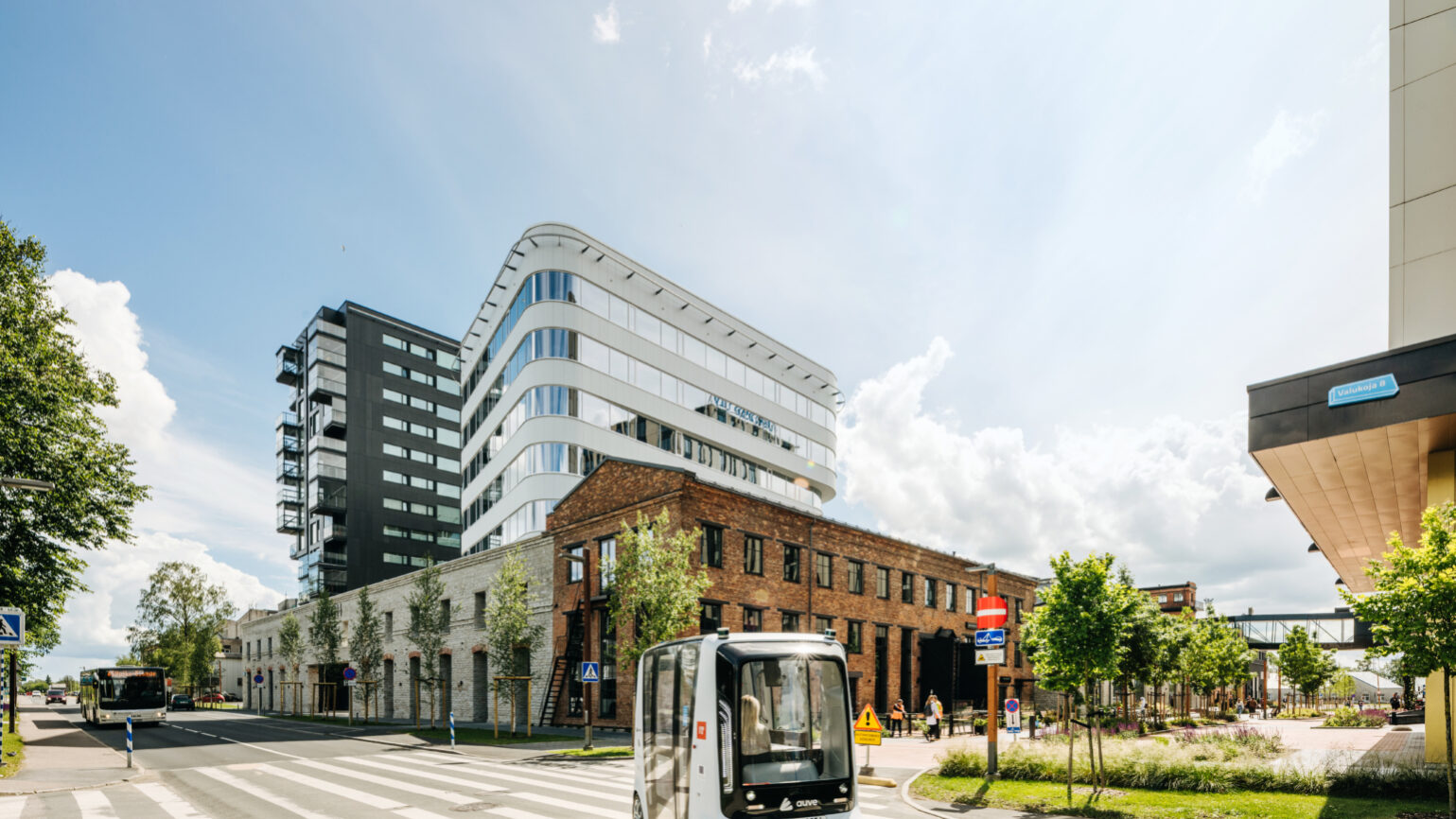- 10%saved from monthly energy bill
- 12tof CO2 emissions reduced annually
- 15000m2floor area
- 0%of core business affected
Therefore, smart energy consumption in office buildings has an enormous impact on the whole energy system efficiency.
About the client
- Function: Office building
- Location: Tallinn, Estonia
- Services: mFRR
The building has a glass façade and it is separated into 3 towers. Combining a total of 15 000m2 floor area to its tenants. Our pilot project was implied on a single tower, approximately 1/3 of the total area. The building has central a BMS, which made our virtual power plant integration relatively easy.
Additional revenue
Additional revenue for the client is mainly generated through the flexibility of cooling and ventilation systems. It is important to point out that the majority of the buildings’ potential flexibility is available only on working days between 7.00 and 19.00. The 12-hour window means that there is a 50% reduction of usable flexibility compared to facilities with continuous operation. During that 12-hour window, the building could monthly contribute up to 8 MWh of regulating energy to balancing markets. That means approximately 8000 EUR yearly revenue.
Balance between flexibility and happy tenants:
As previously mentioned, the building has a glass façade which means a proper cooling and ventilation power is constantly required, especially on a sunny day. Multiple surveys and daily observations were used to find the desired harmony between revenue and perfect indoor climate. Initially, a 40% reduction of ventilation power and 17 °C cooling tank setpoint was used. After some feedback, the regulation range for ventilation was reduced to 20%. On an average day, that means the airflow from ventilation is reduced from 100% to 80% up to 4 times with an average duration of 39 minutes. Finally, several setting groups for flexibility were deployed and could be used according to seasonal preferences. E. g. ventilation setpoints, cooling setpoints, and maximum flexibility duration.
Figure1 displays the correlation between outside temperature and building flexibility in the Baltics during the spring. Unusual measurements on the 27th of May could be caused by 1) inaccuracy of Fusebox’s baseline methodology 2) The Cooling system could not be regulated because of the sunny weather according to temperature. According to May 2020, it seems that around 10 degrees Celsius equals the most flexibility.

Key observations
- 0,016 kW of flexibility per square metre
- Office buildings require more than 1 fixed flexibility setting group
- Buildings contribute massively to GHG
- Flexibility is only available during the working days.

